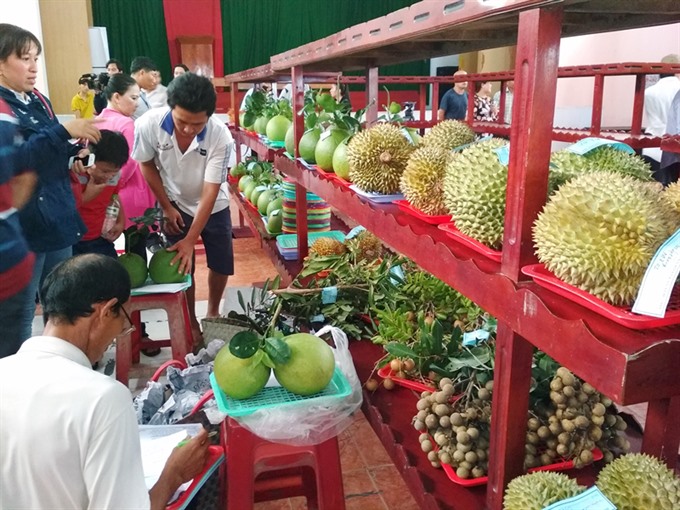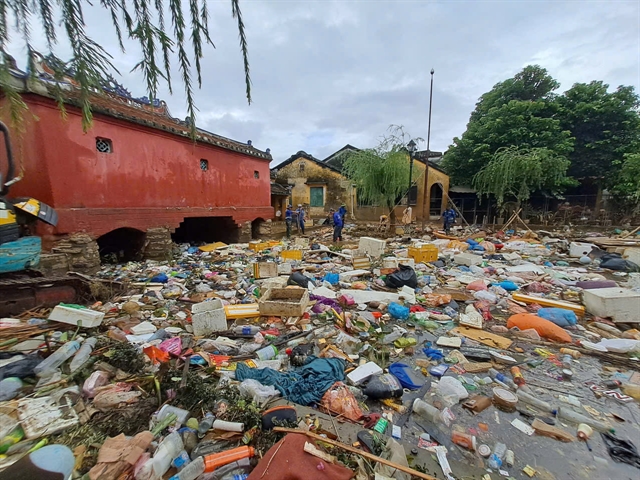 2025.jpg) Economy
Economy

Authorities in the southern province of Bến Tre will focus on building brandnames for local special fruits, gaining prestige in the market and building good image that can ingrain into the consumers’ consciousness.
 |
| A corner of the fruit festival in the southern province of Bến Tre. — Photo baodongkhoi.com.vn |
HÀ NỘI — Authorities in the southern
Speaking at a conference on the development of brand names for Bến Tre fruits and bonsai held on June 18 in the province, Director of the provincial Department of Sciences and Technology Lâm Văn Tân said that for local products to penetrate into export markets, the first thing to do was to build their brands.
“Branding is becoming a topic that is of particular concern to businesses, Government agencies and trade associations,” said Tân.
The conference aimed at exploiting and developing branding for fruit trees and flowers of
The province has an agricultural area of about 180,000ha, accounting for nearly 80 per cent of the natural land. Within this, the area of orchard is 30,000ha, growing mainly bưởi hồng da xanh (green-peel and pink-flesh) grapefruit, rambutan, longan and coconut.
“When you mention Bến Tre, people always think of coconuts, durian, Cái Môn bonsai and flowers, and rambutan, but many people are less interested in the brand of agricultural products,” said Tân.
Many local fruits have been granted brand certification by the National Office of Intellectual Property of Việt
From 2013 to now, the province has developed more than 20 collective brand names and geographical indications.
According to Trần Giang Khê, head of the National Office of Intellectual Property’s Office in
He said collective branding could be registered as intellectual property. The registration is not as complicated and costly as geographical indications.
“Another advantage of collective branding is that through this work, it is possible to gather and promote collective power and community participation in the intellectual property protection of traditional values. As a result, members can help each other in the production and trading of branded products,” said Khê.
To spread branded products, Director of Aliat Legal Company Dương Thành Long said management agencies needed to organise fairs and conferences to introduce products with trademarks or geographical indications to consumers. In coordination with traditional advertising activities, it can be flexibly combined with media for further advertising.
“In addition, management agencies should coordinate with experts and researchers to provide growers with modern technical training support, helping ensure the quality of products,” said Long. — VNS




